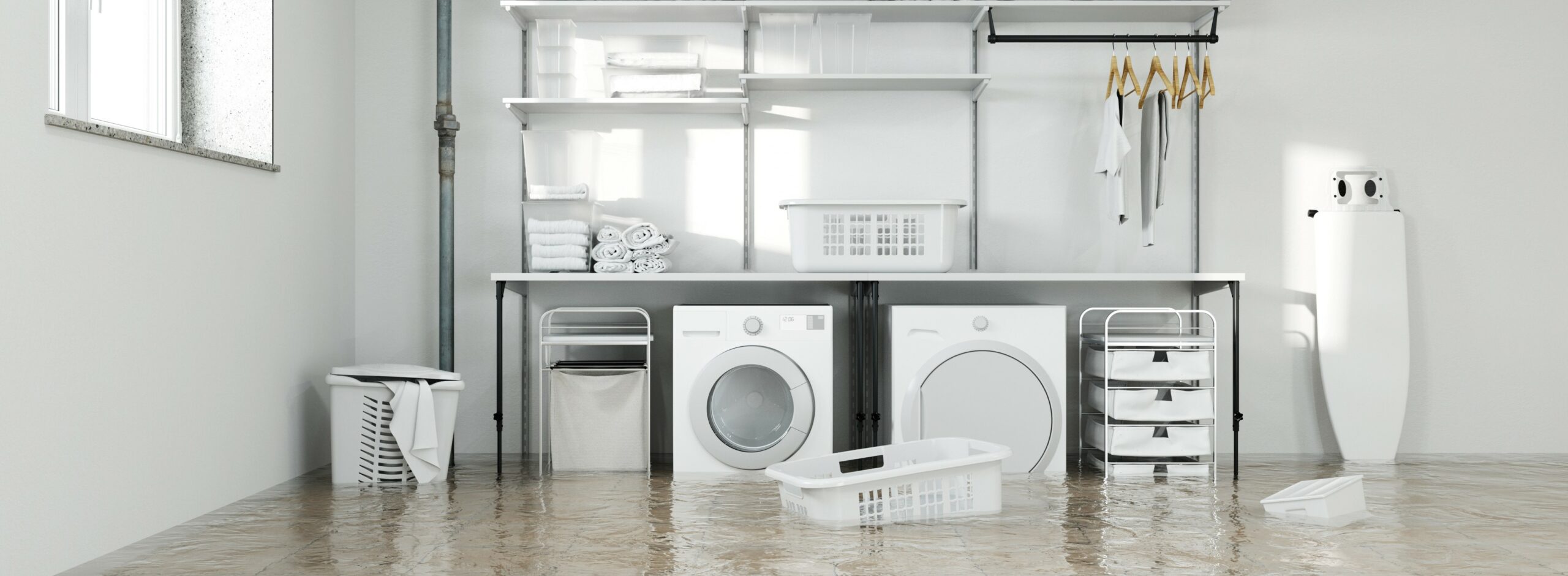After winter, it’s no wonder we welcome Spring with arms wide open – the warmer days, the chirping birds and the blooming flowers. However, along with these cheerful delights, Spring can also bring unwelcome surprises like basement flooding and roof leaks. The combination of heavy rainfall and snow and ice melting can cause large runoff amounts that overflow and flood homes.
Learn how you can keep your home dry during Spring and avoid the risk of water damage that could cost you $43,000 to repair.
- Install a sump pump and backwater valve
A sump pump’s job is to pump water out of your basement and away from the house to prevent basement or crawlspace flooding. A backwater valve is to prevent sewage in a congested main sewer line from backing up into your house. It’s important to ensure these two devices function properly and are not blocked. Also prepare a battery-operated sump pump in case the power goes out during a storm. - Check and repair cracks
Look for cracks in your exterior foundation and your basement walls and floors and repair them. You might need to engage professional help if the crack is serious to ensure that your house is effectively waterproofed. - Doors and windows
A bad weatherstripping job or old caulking often causes water leakage. Ensure the seals around doors, windows, skylights and other openings are watertight. Clean window wells and consider installing clear acrylic window well covers that allow light to enter but keep out rain, leaves and pests. - Keep snow away from the foundation
Clear any snow two to three feet away from the foundation, not forgetting all ground-level doors, windows, and other openings. This will help prevent melting snow from flowing into your house. - Slope the ground away from the foundation
This exercise helps water flow away from the home foundation. Raise the ground around your house and plant shrubs at least three feet away from the walls. Landscape your yard with plants that will reduce soil erosion. - Inspect the roof, gutters and downspouts
Examine your roof for signs of damage due to wear and tear such as upturned shingle corners, missing or loose shingles. Repair or replace deteriorating shingles immediately to prevent water leakage through the roof. Clear the gutters and the eavestroughs of any leaves and debris that might otherwise clog up the flow of rainwater. Position downspouts away from your home foundation and your neighbour’s. You want rainwater to drain at least three feet away so consider using an extension. - Keep the drains draining
Keep all your drains clear of obstructions. Check that your storm drains close to your house are clear of leaves and dirt to ensure water can properly drain in them when it’s raining. A clogged drain will cause a buildup that could potentially flow back into your property and flood it.
Does your home insurance cover water damage?
Following these Spring tips may help you avoid any unwelcome surprises that might spring at you (pun intended). But to help you fully welcome Spring with peace of mind, it’s best to ensure that your home insurance has adequate coverage for water damage. It can be costly to repair water damage without proper coverage. Most standard home insurance covers water damage due to broken pipes and faulty water tanks but not due to external sources such as rain and bad sewage system. To ensure you have proper coverage, talk to a real person from one of our brokerages today.
